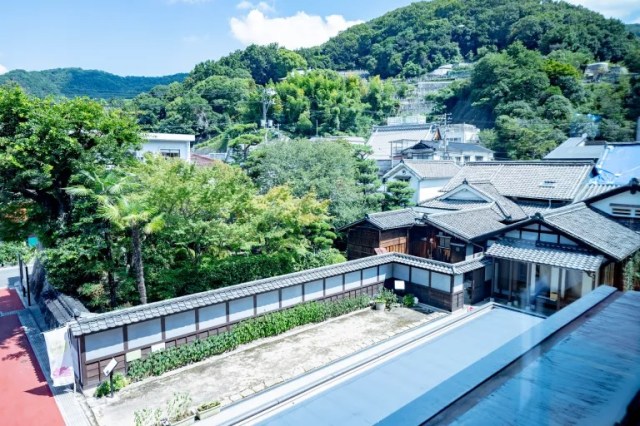
Small details tell some big stories.
Today, we’re headed to the Chiba samurai residence. If you know much about Japanese geography, you might think that means we’re going east from Tokyo to the capital’s neighbor, Chiba Prefecture. Actually, though, we’re going west, almost all the way to the opposite side of Japan’s main island of Honshu, to Hiroshima Prefecture.
▼ The Chiba family crest
The Chiba Family Residence (technically the Former Chiba Family Residence, since they don’t live there anymore) is located in Kaita, a town on the east side of Hiroshima Bay. Back in the days of the shogunate, Kaita was a flourishing settlement on one of the region’s post roads, and the Chiba were one of its most prominent families. The tatami-floor building of their beautiful hillside estate was most recently reconstructed in 1774, and its architecture has been preserved through to the present day.
It’s been decades since the Chiba family lived here, and the house is now a historical site and free museum that’s open to the general public to visit. The gardens are beautiful, and stepping inside the building feels like stepping back in time. On display are artifacts such as stately samurai helmets, exquisitely illustrated wall scrolls, and pieces of fine ceramic and lacquerware.
▼ Plus some adorable rabbit-themed latticework above the window here
Following the end of Japan’s Sengoku civil war period, the Chiba family made its peacetime living by producing and selling sake under the brand Jinboya.
However, that doesn’t mean life was all easy for the family, and one example of that can be found in the house’s bathroom.
▼ A bathroom which predates Japan’s high-tech washlet toilets
The first thing that we noticed was that the bathroom had tatami reed flooring, which we imagine must have been a serious pain to scrub clean if someone had poor aim while dropping a deuce into the hole in the center of the floor. But the even more startling feature is up on the wall…
…where there’s a rack to hold a katana, because apparently even while taking a poop, the family felt the need to stay diligent against possible attacks by assassins.
▼ The rack is even situated so that the weapon can be quickly drawn with the right hand without having to rotate the scabbard or blade in order to have the sword in a proper fighting grip.
There’s one more sign of how it wasn’t always easy being a samurai back out in the garden, where there’s a shrine.
Remember how we said the name of the family that lived here, Chiba, is also the name of a prefecture on the other side of Japan? That’s not a coincidence. The Chiba family originally did hail from Chiba Prefecture. The family aligned itself with the Mori samurai clan, whose power base was in what’s now Hiroshima Prefecture. At the Battle of Sekigahara in 1600, the decisive clash that brought an end to the Sengoku period that took place in central Japan, both the Chiba and the Mori fought on the side of the Western Army. With the Western Army’s defeat, the surviving members of the Chiba family, cut off from their homelands, fell back to the formerly Mori-controlled lands of Hiroshima Prefecture, where they remained and began new lives.
Originally, “Chiba” wasn’t even the family’s official family name. Family names themselves were reserved for the nobility, which the family no longer was following their defeat at Sekigahara. Eventually, though, within the community they became referred to as the family that had come from Chiba. In 1870, when the reforms of the Meiji Restoration required even commoners to register a family name, the family chose “Chiba.”
And that shrine in the garden? It faces east, in the direction of Chiba Prefecture, so that the family wouldn7t forget where it came from.
Location information
Former Chiba Family Residence / 旧千葉家住宅
Address: Hiroshima-ken, Aki-gun, Kaita-cho, Nakamise 8-31
広島県安芸郡海田町中店8−31
Open 10 a.m.-4 p.m.
Admission free
Website
Photos © SoraNews24
● Want to hear about SoraNews24’s latest articles as soon as they’re published? Follow us on Facebook and Twitter!

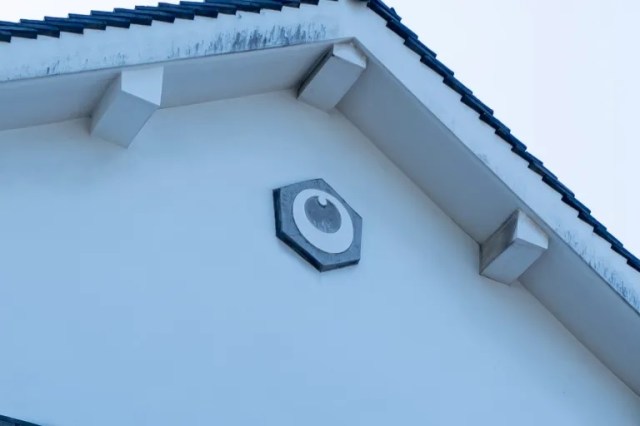
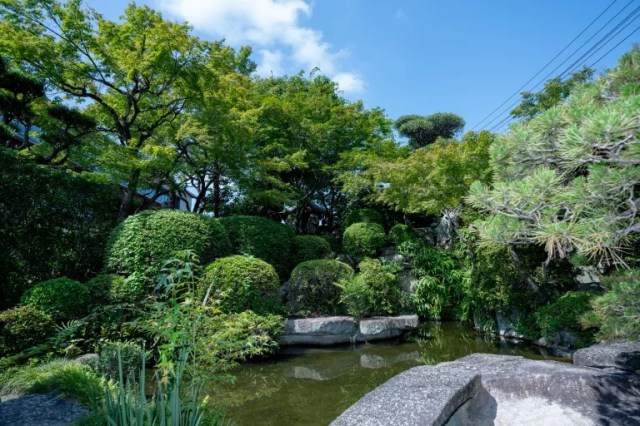
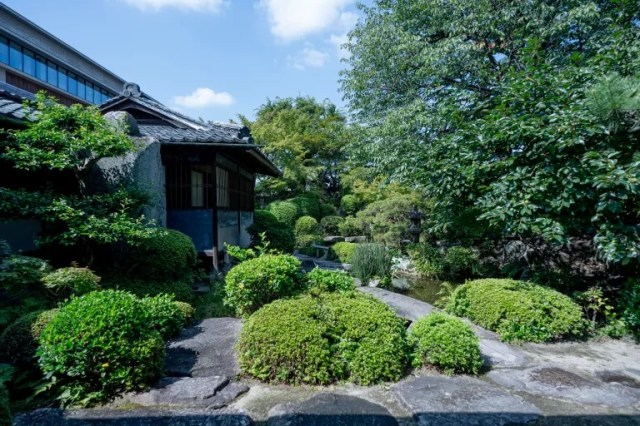
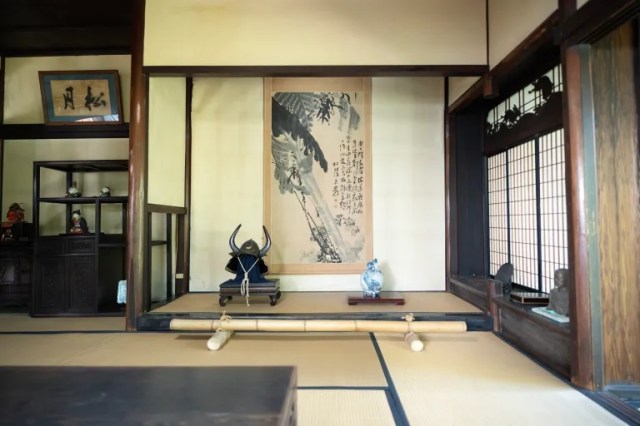
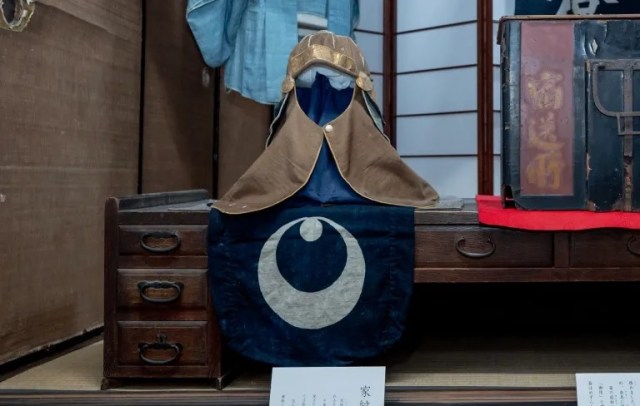
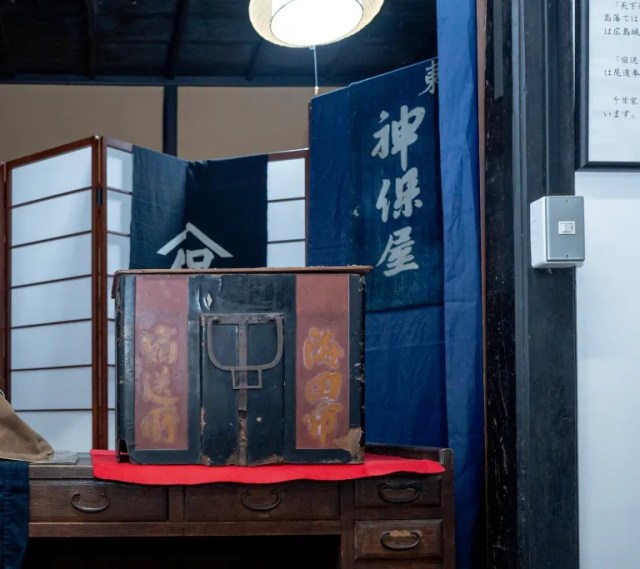
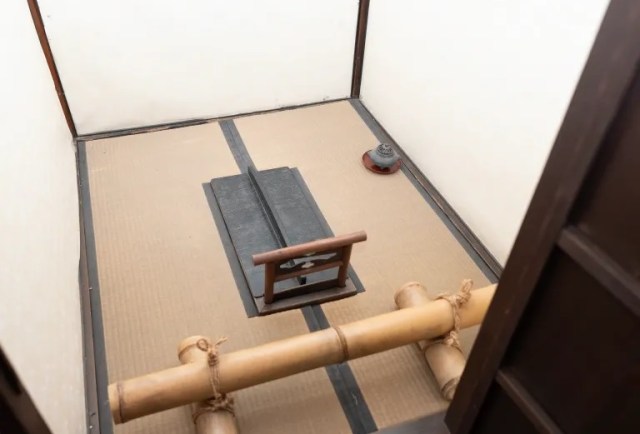
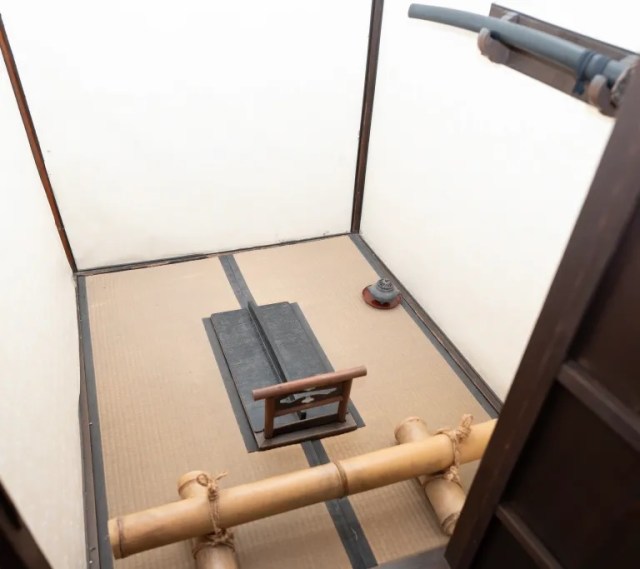
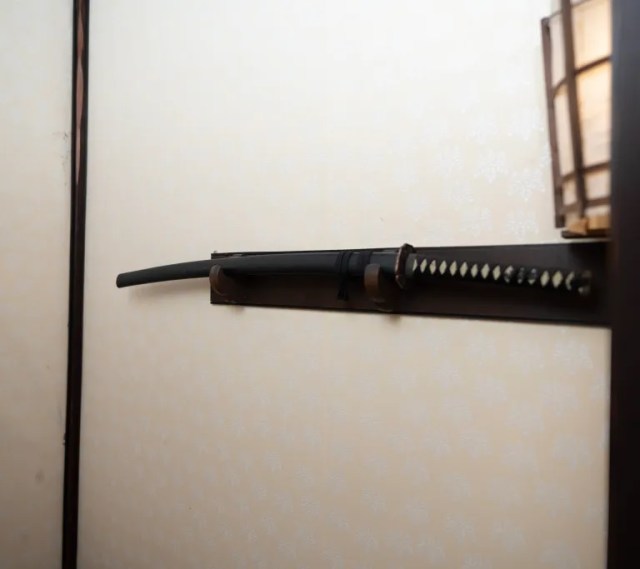
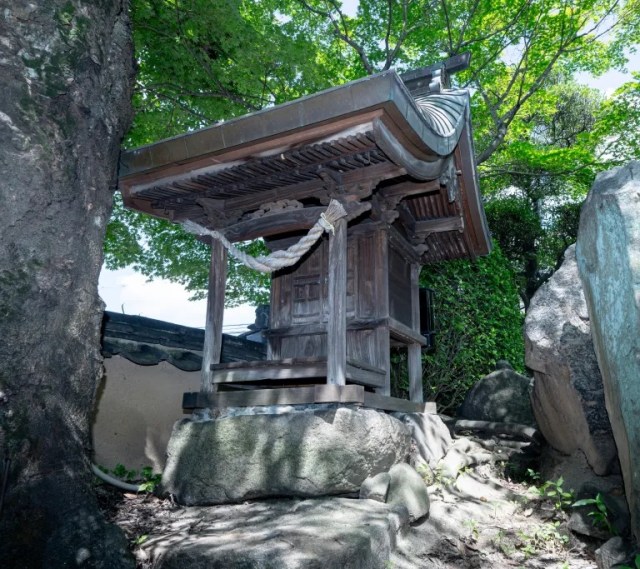
 New capsule toy collection features military commander samurai armour from the Sengoku Period
New capsule toy collection features military commander samurai armour from the Sengoku Period A visit to Japan’s forbidden forest of Yawata no Yabushirazu
A visit to Japan’s forbidden forest of Yawata no Yabushirazu Coca-Cola’s new limited-edition Japan travel destination bottles highlight history and culture
Coca-Cola’s new limited-edition Japan travel destination bottles highlight history and culture Impress your Japanese history professor with this T-shirt
Impress your Japanese history professor with this T-shirt Japanese voodoo dolls with foreign politician photo keep getting nailed to town’s shrine trees
Japanese voodoo dolls with foreign politician photo keep getting nailed to town’s shrine trees Foreigner’s request for help in Tokyo makes us sad for the state of society
Foreigner’s request for help in Tokyo makes us sad for the state of society Japanese city loses residents’ personal data, which was on paper being transported on a windy day
Japanese city loses residents’ personal data, which was on paper being transported on a windy day Should you add tartar sauce to Japanese curry rice? CoCo Ichi makes diners an unusual offer
Should you add tartar sauce to Japanese curry rice? CoCo Ichi makes diners an unusual offer Seaside scenery, history, and so many desserts on Yokohama’s Akai Kutsu【Japan Loop Buses】
Seaside scenery, history, and so many desserts on Yokohama’s Akai Kutsu【Japan Loop Buses】 Red light district sushi restaurant in Tokyo shows us just how wrong we were about it
Red light district sushi restaurant in Tokyo shows us just how wrong we were about it Mt. Koya planning to instate visitor’s tax to cope with huge tourist numbers
Mt. Koya planning to instate visitor’s tax to cope with huge tourist numbers Tokyo Tsukiji fish market site to be redeveloped with 50,000-seat stadium, hotel, shopping center
Tokyo Tsukiji fish market site to be redeveloped with 50,000-seat stadium, hotel, shopping center Beautiful Ghibli sealing wax kits let you create accessories and elegant letter decorations【Pics】
Beautiful Ghibli sealing wax kits let you create accessories and elegant letter decorations【Pics】 Harajuku Station’s beautiful old wooden building is set to return, with a new complex around it
Harajuku Station’s beautiful old wooden building is set to return, with a new complex around it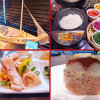 Kyoto breakfast buffet with all-you-can-eat sushi: One of the best possible ways to start a day
Kyoto breakfast buffet with all-you-can-eat sushi: One of the best possible ways to start a day McDonald’s new Happy Meals offer up cute and practical Sanrio lifestyle goods
McDonald’s new Happy Meals offer up cute and practical Sanrio lifestyle goods Japanese ramen restaurants under pressure from new yen banknotes
Japanese ramen restaurants under pressure from new yen banknotes French Fries Bread in Tokyo’s Shibuya becomes a hit on social media
French Fries Bread in Tokyo’s Shibuya becomes a hit on social media Studio Ghibli releases new action figures featuring Nausicaä of the Valley of the Wind characters
Studio Ghibli releases new action figures featuring Nausicaä of the Valley of the Wind characters New private rooms on Tokaido Shinkansen change the way we travel from Tokyo to Kyoto
New private rooms on Tokaido Shinkansen change the way we travel from Tokyo to Kyoto All-you-can-drink Starbucks and amazing views part of Tokyo’s new 170 meter-high sky lounge
All-you-can-drink Starbucks and amazing views part of Tokyo’s new 170 meter-high sky lounge Studio Ghibli releases Kiki’s Delivery Service chocolate cake pouches in Japan
Studio Ghibli releases Kiki’s Delivery Service chocolate cake pouches in Japan New definition of “Japanese whiskey” goes into effect to prevent fakes from fooling overseas buyers
New definition of “Japanese whiskey” goes into effect to prevent fakes from fooling overseas buyers Our Japanese reporter visits Costco in the U.S., finds super American and very Japanese things
Our Japanese reporter visits Costco in the U.S., finds super American and very Japanese things Studio Ghibli unveils Mother’s Day gift set that captures the love in My Neighbour Totoro
Studio Ghibli unveils Mother’s Day gift set that captures the love in My Neighbour Totoro More foreign tourists than ever before in history visited Japan last month
More foreign tourists than ever before in history visited Japan last month New Pokémon cakes let you eat your way through Pikachu and all the Eevee evolutions
New Pokémon cakes let you eat your way through Pikachu and all the Eevee evolutions Sales of Japan’s most convenient train ticket/shopping payment cards suspended indefinitely
Sales of Japan’s most convenient train ticket/shopping payment cards suspended indefinitely Sold-out Studio Ghibli desktop humidifiers are back so Totoro can help you through the dry season
Sold-out Studio Ghibli desktop humidifiers are back so Totoro can help you through the dry season Japanese government to make first change to romanization spelling rules since the 1950s
Japanese government to make first change to romanization spelling rules since the 1950s Ghibli founders Toshio Suzuki and Hayao Miyazaki contribute to Japanese whisky Totoro label design
Ghibli founders Toshio Suzuki and Hayao Miyazaki contribute to Japanese whisky Totoro label design Doraemon found buried at sea as scene from 1993 anime becomes real life【Photos】
Doraemon found buried at sea as scene from 1993 anime becomes real life【Photos】 Tokyo’s most famous Starbucks is closed
Tokyo’s most famous Starbucks is closed One Piece characters’ nationalities revealed, but fans have mixed opinions
One Piece characters’ nationalities revealed, but fans have mixed opinions We asked a Uniqlo employee what four things we should buy and their suggestions didn’t disappoint
We asked a Uniqlo employee what four things we should buy and their suggestions didn’t disappoint Princesses, fruits, and blacksmiths: Study reveals the 30 most unusual family names in Japan
Princesses, fruits, and blacksmiths: Study reveals the 30 most unusual family names in Japan Rent an entire folk house in Japan, surrounded by nature just outside Tokyo
Rent an entire folk house in Japan, surrounded by nature just outside Tokyo Swords of famous samurai reborn as beautiful kitchen knives from Japan’s number-one katana town
Swords of famous samurai reborn as beautiful kitchen knives from Japan’s number-one katana town 82-0 shellacking kicks off Japan’s National High School Baseball Championship
82-0 shellacking kicks off Japan’s National High School Baseball Championship You could be renting this 300-year-old samurai era house in Japan right now
You could be renting this 300-year-old samurai era house in Japan right now JR East to re-educate employees after frequent overruns on JR Keiyo Line
JR East to re-educate employees after frequent overruns on JR Keiyo Line Japanese architect turns eight one-room apartments into quirky Cubism-inspired family home【Video】
Japanese architect turns eight one-room apartments into quirky Cubism-inspired family home【Video】 Schoolgirls scared, amused as tornado forms just east of Tokyo【Video】
Schoolgirls scared, amused as tornado forms just east of Tokyo【Video】 When do Japanese women have their first kiss? Survey finds gap between different parts of Japan
When do Japanese women have their first kiss? Survey finds gap between different parts of Japan 7-Eleven refuses to cooperate with municipal request to cover up its porno magazines in Japan
7-Eleven refuses to cooperate with municipal request to cover up its porno magazines in Japan Katana of four of Japan’s greatest samurai turned into gorgeous scissors
Katana of four of Japan’s greatest samurai turned into gorgeous scissors Samurai Studio: Tokyo’s new photo studio where you can get your picture taken in samurai armor
Samurai Studio: Tokyo’s new photo studio where you can get your picture taken in samurai armor Pokémon train brings smiles to Tohoku kids’ faces
Pokémon train brings smiles to Tohoku kids’ faces Scholars confirm first discovery of Japanese sword from master bladesmith Masamune in 150 years
Scholars confirm first discovery of Japanese sword from master bladesmith Masamune in 150 years There’s a samurai-era village for you to walk through at this awesome overlooked museum in Japan
There’s a samurai-era village for you to walk through at this awesome overlooked museum in Japan Japanese sushi train restaurant offers unlimited food, drinks and desserts for less than $15!
Japanese sushi train restaurant offers unlimited food, drinks and desserts for less than $15!
Leave a Reply